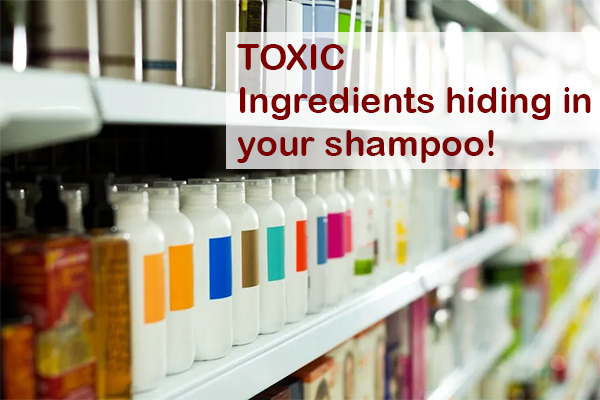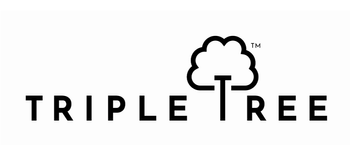
Harmful Ingredients You Should Avoid When Looking for Hair Shampoo & Conditioner!
More people are being conscious about their well being, from dieting to what they wear and use. But do you really know what are in your hair care products that you use daily? Read on to know what kind of ingredients you should avoid when getting yourself a shampoo, conditioner or any other hair care products.

1. Ammonium Lauryl Sulfate or Sodium Laureth Sulfate (SLES) and Sodium Lauryl Sulfate (SLS)
Sulfates are surfactants commonly found in shampoo, dish cleaners, laundry detergents and floor cleaners because of their effectiveness in removing grease or sebum. They are also used for lathering purposes to give you the foaming effect everyone loves as this gives you a squeaky clean feel. However, they are harsh to your scalp and could damage your hair, make it brittle and frizzy. Those with sensitive skin should avoid Sulfates as they can cause allergic reactions. Sulfates are also harmful for the environment and aquatic species.
2. Diethanolamine (DEA) And Triethanolamine (TEA)
DEA and TEA are harmful foaming agents or emulsifiers used in shampoos to create the rich lather that most people love. When they are combined with other chemicals, they will form Nitrosodiethanolamine (NDEA), which is a cancer-causing agent. According to research, the human skin can easily absorb NDEA leading to various skin problems.
3. Mineral Oil
Mineral oil is commonly used in different cosmetic formulations as well as hair products. It restores shine, reduces tangles and prevents split ends when used on hair. However, it won't be effective in treating existing damage because it only acts as a protective, glossy coating and can't actually penetrate into your hair fibre.
4. Parabens
We believe you have heard of the word “Paraben” at least a million times, but what are they exactly?
Parabens are preservatives used to prevent the growth of bacteria in cosmetics, skincare and haircare products. They are claimed to be harmful because they can mimic the hormone estrogen and have been linked to an increased risk and growth of breast cancer cells.
There are a few Parabens that are commonly found in skincare and haircare products, and they are methyl-paraben, propyl-paraben, ethyl paraben and parahydroxybenzoate.
5. Formaldehyde
Oftenly named as quaternium-15 in the ingredients list of shampoo bottles, this Formaldehyde releaser is a preservative that keeps your shampoo longer and it’s easily absorbed by the skin. Formaldehyde is a known human Carcinogen (a substance capable of causing cancer in living tissue), so avoid shampoos that have this listed in their ingredients at all cost.
6. Triclosan
Triclosan is usually found in antibacterial products like shampoo, soap, toothpaste and deodorants. It is a chemical antibacterial agent which can cause hormone disruptions, skin allergies, disruption of thyroid metabolism, weakening of the body’s immune system and cancer. It may also cause eczema and asthma in children.
7. Dimethicone
Dimethicone is a type of silicon added in hair care products. It acts like a protective layer and gives you the illusion that your hair looks shiny, but over time, it builds up residue on your scalp, prevents moisture from penetrating the hair and can cause scalp irritation by clogging the pores, resulting in making your hair feels heavy, limp and lifeless.
8. Sodium Chloride
Sodium Chloride is simply salt and it is used to maintain thicker consistency in shampoo and conditioners. Sodium Chloride is a known skin irritant and it damages your cuticle layer of your hair shaft. It is recommended for those who already have sensitive skin to avoid this as it will cause your scalp feeling dry and itchy, and eventually lead to hair loss.
9. Alcohols
Alcohol is not uncommon in shampoos and it has a drying effect, but those that start with “C” or “S” are not as bad for dry hair, like Cetearyl alcohol and Stearyl alcohol because they can help retain moisture in your hair. Those that are bad for dry hair have a “prop” in their names like Isopropyl alcohol or propanol.
10. Silicons
The name tells it all - it’s plastic. Silicon’s main function is to form a shiny layer on your hair shaft to make hair appear smooth and glossy. Silicons are great for locking in moisture and keeping hair hydrated temporarily, giving the hair instant shine by adding an exterior seal to your hair cuticles, resulting in dry and damaged hair when used constantly because the seal prevents moisture from penetrating the hair shaft.
Some Silicons to look out for: Dimethicone, Cyclomethicone,, Phenyl trimethicone, Cyclopentasiloxane, Cyclohexasiloxane.
11. Synthetic Fragrances / Parfum
If the product only stated “Fragrance” or “Parfum” in its ingredients, then you will never know how much chemicals are in it. It is usually made with a blend of toxic chemicals in a lab. It may make your hair products smell great, but these synthetic fragrances may cause endocrine disruption, cancers, reproductive issues or asthma attacks. Some fragrances can affect the scalp and lead to hair loss.
12. Phthalates
Phthalates are used to dissolve other ingredients, improve texture and make added fragrances last longer. They also serve as lubricators in conditioners and gels and help the substance spread easily on your hair.
Phthalates are also a known carcinogen and can cause various health problems such as nausea, problems in the reproductive system such as early puberty in girls and reduced sperm count in men, and hormonal disorders. So, if your product has fragrance or parfum, it probably already has phthalates in it. They are also dangerous for the environment.
Shocking, isn’t it? Well, it might be difficult to totally avoid all those as most over-the-shelf hair care products contain either two or three, listed above, but at least you know what works for your scalp and tresses.
And if you’re looking for hair care products that are free from those listed above, you may want to give Triple Tree products a try. Free from harmful chemicals, and are naturally scented using essential oils and plant extracts. Click HERE to find out more.
